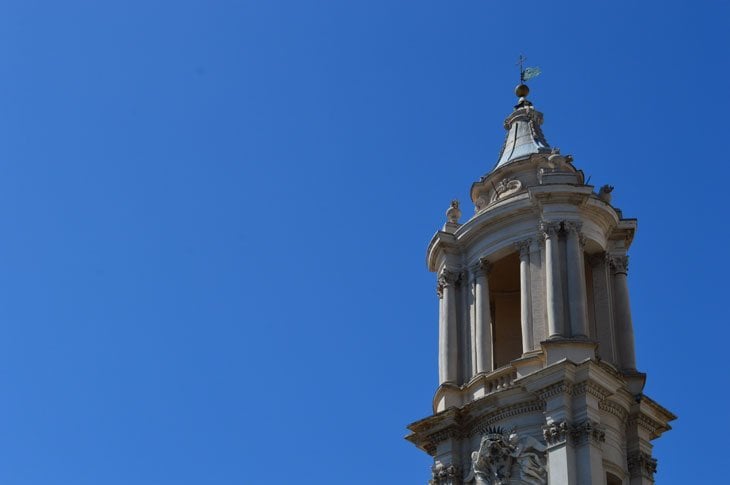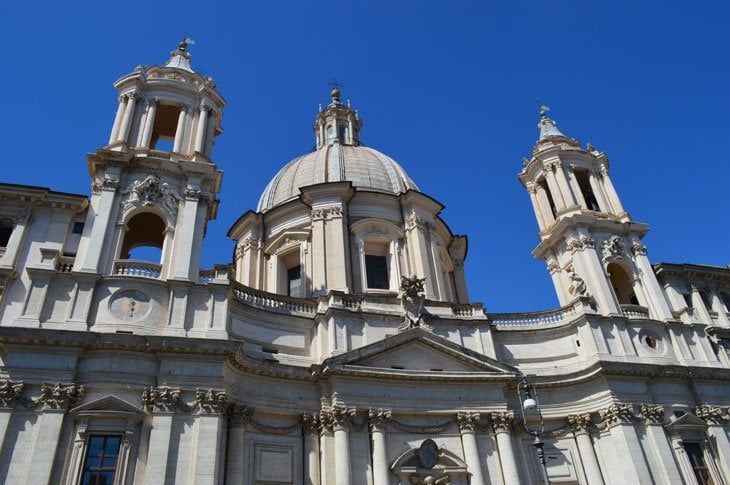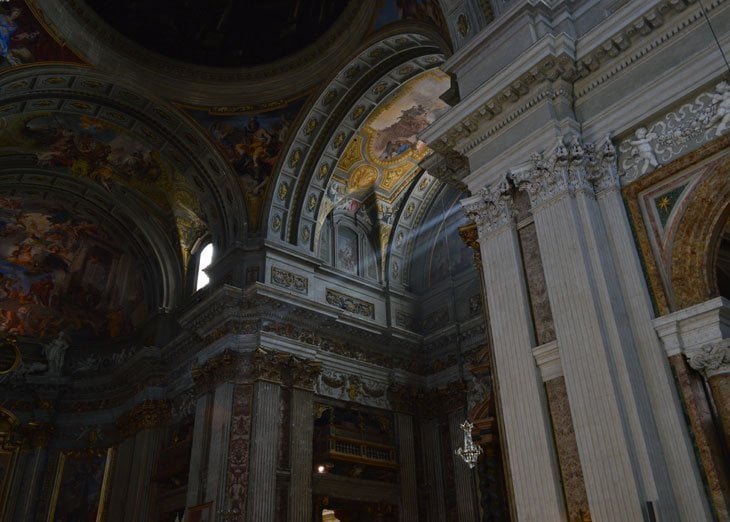A trip to Rome, the eternal city, is a journey through time, a sensory overload of history, art, and vibrant life that spills onto every cobblestone street.
And at the very heart of this experience lies one of its most magnificent jewels: Piazza Navona. More than just a square, it’s a grand, open-air theatre of Baroque artistry, a place where the past and present don’t just meet—they dance.
Whenever I am in Rome I always find time to grab a coffee in Piazza Navona, it has a wonderful vibe about it, plus it is situated near many other landmarks I want to see. So I more often that not end up passing through it anyway.

Whether you’re a first-time visitor, captivated by the grandeur, or a seasoned traveller returning to an old friend, Piazza Navona never fails to enchant. It’s a place to wander, to wonder, and to simply be.
Piazza Navona at a Glance: Visitor Essentials
For the traveller on the go, here are the key facts to plan your visit.
|
Location |
In the heart of Rome’s Centro Storico (Historic Center). |
|
How to Get There |
Bus: Lines 40 or 64 stop nearby at Piazza della Chiesa Nuova, a short 300-meter walk away. Metro: The closest stop is ‘Spagna’ on Line A, but be prepared for a pleasant walk of just over a kilometer through charming streets to reach the piazza. |
|
Best Times to Visit |
To truly appreciate its beauty without the crowds, visit early in the morning. For a magical experience, come after dark when the magnificent fountains are illuminated. |
|
Cost |
Entering and enjoying the piazza is completely free. However, adjacent attractions like the underground Stadium of Domitian have an entrance fee. |
The Deep History of Piazza Navona
To stand in Piazza Navona is to stand on layers of history. Its story is not just written in stone but is etched into its very shape.
Its life began not as a square, but as the Stadium of Domitian, built in 86 AD. This was Rome’s first permanent venue for Greek-style athletic competitions, or agones. Imagine the roar of up to 30,000 spectators filling this space, cheering on the athletes.
The name itself is a whisper from the past; “agones” slowly morphed through the centuries into “in avone,” and finally, “Navona”.

After the fall of the Roman Empire, the stadium fell into ruin, its stones quarried for other buildings.
But its footprint remained. In the 15th century, the city’s main market was moved here from the Campidoglio, and the ancient arena was paved over, reborn as a public square.
The piazza’s most dramatic transformation came in the 17th century under Pope Innocent X of the powerful Pamphilj family.
He envisioned a grand showcase of Baroque art and architecture, a testament to his family’s prestige, and in doing so, gave us the masterpiece we see today.

For two centuries, from 1652 to 1865, a unique tradition took hold.
Every weekend in August, the drains of the fountains were blocked, and the concave square was intentionally flooded to create “The Lake of Piazza Navona,” a welcome and festive spectacle for Romans escaping the summer heat, until it was stopped for hygiene reasons.
This rich history is well-documented by sources like the official Rome tourism board.
The Architectural Wonders
Piazza Navona is a masterclass in Baroque design, a symphony of flowing lines, dramatic sculptures, and architectural genius.
Fontana dei Quattro Fiumi (Fountain of the Four Rivers)
At the heart of the square, commanding all attention, is this stunning creation by Gian Lorenzo Bernini, unveiled in 1651.

It’s a whirlwind of motion, with four colossal statues representing the great rivers of the four continents then known to the Papacy: the Nile for Africa, the Ganges for Asia, the Danube for Europe, and the Río de la Plata for the Americas.
Each figure is rich with symbolism—the Nile’s head is veiled, as its source was then unknown, while the Río de la Plata sits on a pile of coins, representing the riches of the New World.
Towering over them is an ancient Egyptian obelisk, brought here from the Circus of Maxentius, tying Rome’s imperial past to its Baroque present.
Fontana del Moro (Fountain of the Moor)
At the southern end of the piazza lies this fascinating fountain, a work of multiple artists across a century. The basin and four Tritons were originally designed by Giacomo della Porta in 1576.
Nearly 100 years later, Bernini added the powerful central figure of a Moor wrestling with a dolphin, giving the fountain its current name and dramatic focus.
The surrounding Tritons you see today are 19th-century copies, completing a story told over 300 years.
Fountain of Neptune
Balancing the square at its northern end is the Fountain of Neptune.
Like its southern counterpart, it was originally designed by Giacomo della Porta in 1574 but then sat unadorned for three centuries.
It wasn’t until 1878 that the dramatic central statue of Neptune fighting with an octopus was added by Antonio Della Bitta, finally giving the fountain the powerful centerpiece it deserved and creating a beautiful symmetry with the Fontana del Moro.
Church of Sant’Agnese in Agone
Facing Bernini’s central fountain is the magnificent facade of this Baroque church, a masterpiece by his great rival, Francesco Borromini, along with Girolamo Rainaldi.

Legend swirls around these two geniuses. It’s said that Bernini designed the statue of the Nile to be shielding its eyes in horror from Borromini’s “unstable” church.
In reality, the fountain was completed years before the church facade was begun, but the tale adds a delicious layer of drama to the piazza.
The church itself is built on the spot where the early Christian martyr, Saint Agnes, was said to have been miraculously covered by her own hair after being stripped naked.
Inside, its lavishly decorated chapels and altars are a testament to the theatricality of the era.
Palazzo Pamphilj
Lining the western side of the piazza is this opulent palace, once the home of the Pamphilj family and Pope Innocent X.
Today, it houses the Brazilian Embassy, its grandeur a constant reminder of the family that shaped this incredible square.

Beneath the Baroque: Visiting the Stadium of Domitian
To truly understand Piazza Navona, you must go deeper—literally. Five meters below the bustling street level lie the original ruins of the Stadio di Domiziano.
You can explore the remains of the travertine arches and seating that once held a roaring Roman crowd.
It’s a fascinating journey back to the piazza’s origins and a powerful reminder of the layers of history beneath your feet. The entrance is just a short walk from the square, and an audio guide tour brings the ancient arena to life.
You can find the latest visitor information and book tickets online to plan your visit .

Experiencing Piazza Navona
Beyond its history and architecture, Piazza Navona is a living, breathing part of Rome. The air buzzes with a creative energy that is simply infectious.
Artisans and Street Performers
The square is a natural stage for a colourful cast of characters. Musicians fill the air with melodies, painters capture the light on canvas, and performers create moments of magic.
It’s a place to pause, watch the show, and perhaps pick up a unique souvenir from a local creator.
Cafés and Gelaterias
The piazza is lined with cafés, their tables spilling out onto the cobblestones.
While dining al fresco with such a view is a lovely experience, a word to the wise: the establishments directly on the square can be tourist traps and overpriced.
For a more authentic and better-value coffee or gelato, explore the charming side streets that radiate from the piazza.
Shopping
The narrow streets surrounding Piazza Navona are a shopper’s delight.
Here you’ll find quaint boutiques and artisan shops, offering everything from local crafts and fashion to beautiful home goods. It’s the perfect place for a leisurely browse away from the main crowds.
Beyond the Piazza: What to See Nearby
Piazza Navona is the perfect anchor for exploring the historic heart of Rome. Several other iconic landmarks are just a short, delightful stroll away.
- The Pantheon: A true marvel of ancient Roman engineering, this iconic temple is just 300 meters away.
- Campo de’ Fiori: Famous for its vibrant daily market, this lively square is only a 200-meter walk from the piazza.
- Church of San Luigi dei Francesi: A must-see for art lovers. Tucked away in a nearby street, this church holds three breathtaking masterpieces by the master of light and shadow, Caravaggio.
- Palazzo Altemps: Part of the National Roman Museum, this stunning Renaissance palace houses a world-class collection of ancient Greek and Roman sculptures, including the famous Ludovisi Gaul.
- Of course you come here after a wander from the busy but spectacular Trevi Fountain. Via the The Church of St. Ignatius and the unique dome, not dome.
Events and Festivals
Christmas Market (Mercatino della Befana)
During the holiday season, the piazza transforms into a magical Christmas market.
The air fills with the scent of traditional treats as festive lights twinkle and stalls sell beautiful crafts and gifts. It’s a cherished Roman tradition, bustling with street performers and festive cheer.
Summer Concerts
In the warmer months, the piazza often hosts a series of concerts and performances.
Enjoying music in such a stunning outdoor setting, with the Baroque fountains as a backdrop, is an unforgettable experience.
Conclusion
Piazza Navona is more than just a stop on a tourist itinerary; it is the very essence of Rome.
It’s a place where art, history, and daily life collide in the most beautiful way. It’s a space that invites you to slow down, to look closer at the stories carved in stone, and to soak in the timeless atmosphere of the Eternal City.

A perfect day in Rome might take you to many places, but it will always, inevitably, lead you here.
We have plenty of other places in walking distance of here to discover, take a walk through the Ancient Forum or get a view of the whole city from the top of Il Vittoriano.








Amazing, reading your blog makes me long to go back to Italy. The relaxed life ahhhhhh,,,, bellissimo 😀 x
I love your pictures generally but this one especially as we have just got back form Rome. Sadly the Trevi fountain and boat at the bottom of the Spanish steps were covered in plastic as being renovated.
The Piazza Navona was however just as you show it – gorgeous!
awww thats a shame Sarah…. an excuse to get back 🙂
Your reports are amazing and pictures. I love your site Paul.
Hi Denis, so kind of you to say
Awesome pictures and I am sure you had an amazing time there too!!